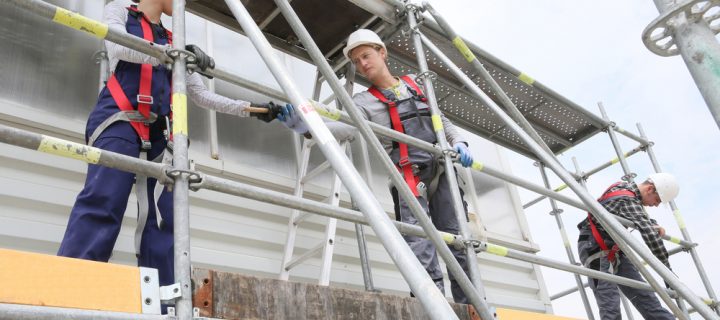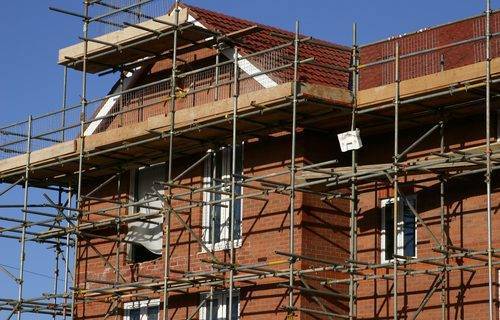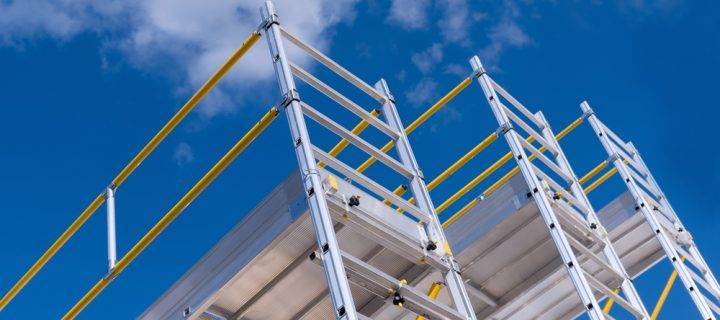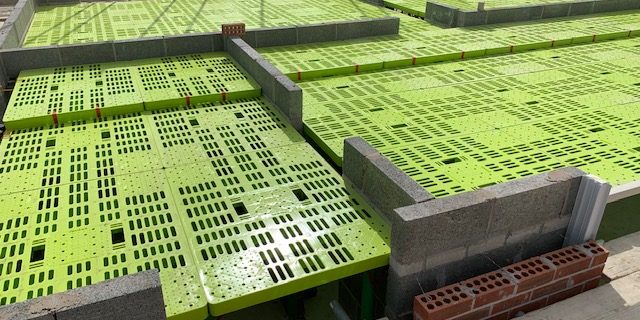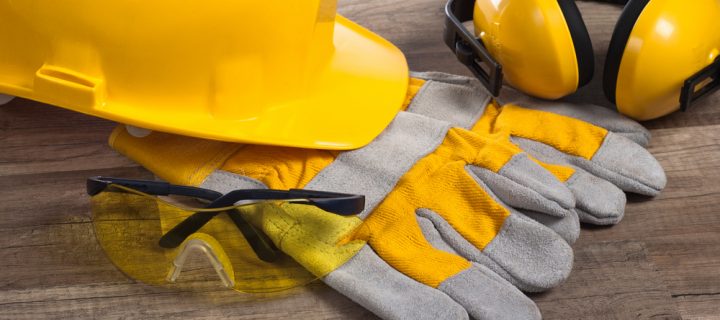Anyone working on erecting scaffolding should be competent or if being trained, should be supervised by a competent person. This needs to be appropriate training with regards to the type of scaffold you are using. As the minimum, every scaffold team should contain a qualified scaffolder for the type and complexity of the platform being erected. This could be an individual that has received industry recognised training such as The Construction Industry Scaffolders Registration Scheme (CISRS) or they have received training under a recognised manufacturer or supplier scheme. Are design drawings needed for my scaffold? A scaffold needs to either be erected to a recognised standard configuration (such as those in National Access and Scaffolding Confederation (NASC) document TG20 Volume 1 for tube and fitting scaffolds or a manufacturers’ guidance for system scaffolds) plus it must be designed by calculation to make sure it has sufficient strength and stability. Do harnesses need to be inspected regularly? Network Scaffold would recommend three levels of inspection for harnesses – Pre-use check – This task needs to be carried out by the user at the start of each shift to check for visible or surface defects. If there are any defects they need to be brought to the attention of the employer. Detailed Inspection – A formally recorded inspection needs to be undertaken at least every six months. For equipment that is used frequently, we would suggest that this task takes place every 3 months, particularly when the equipment is used for demolition, steel erection, steel masts/towers with edges plus scaffolding. Interim Inspection – It may also be appropriate to conduct interim inspections between detailed ones as the employer’s risk assessment could have identified significant deterioration that could affect the lanyard before the next scheduled inspection. The need for interim inspections will depend on how much the harness is used. Some examples where they may be appropriate is working environments that involve paints, chemicals or grit blasting operations or risks from acidic or alkaline environments if the lanyard’s fabric cannot be determined. Get in touch for more information If you have any questions about Network Scaffold’s accreditations, please do not hesitate to contact us...
Read Moreabout What training is needed to work on scaffolding?While you may not think that domestic roofing repairs need a professional to complete, scaffolding will be required for health and safety purposes. Before attempting roof repairs, you will need to consider how to complete the job safely whilst ensuring the building remains in a good and stable condition. If your repairs are not done properly, water will be able to get through and damage internal ceilings and walls which is costly and inconvenient to rectify. If you have doubts about your ability to fix a roofing issue, it is probably more cost-effective to talk to an expert. 5 questions to ask when considering scaffolding What are the rules? Health and safety rules will always advise having a proper risk assessment carried out if more than four people are working at height. The results will often conclude the safest way to complete this task is by using a scaffold. How big is the job? Jobs that involve working on the entire roof will always require scaffolding. These platforms are designed to keep workers at height safe and those based on the ground. If there is a risk of tools or materials falling from the roof, then a scaffold with edge protection will be needed around the platform. If materials are being passed from the roof to the ground a chute will need to be fitted to the edge of the scaffolding to allow for safe transportation. How long will the job take? If your job is likely to last more than two days, especially given the unpredictable British weather, we would always advise using a scaffold. This helps to cover up an unfinished roof plus you can protect the roof, tools and materials from adverse weather. Do I need a platform? If your repairs involve working on a chimney you should always use scaffold as a safe working platform. While there are other alternatives, none are as safe as systems from Network Scaffold as your safety is always worth investing in. When is scaffolding not needed? If your job is quite simple and takes no more than a day, using a safely secured ladder is all you will need. However, consider an alternative if there is any risk of...
Read Moreabout Do I need scaffolding for roof repairs?A warning has been issued after claims were made by scaffolding suppliers who are being targeted by suspected fraudulent customers. While it is unclear whether the spoofing scam was successful, the company involved has reported that individuals have been contacting the firm claiming to be a customer from ‘bonafide’ businesses. The individuals were spoofing the landline phone numbers of the companies to make them look like legitimate customers. They would place large value orders for scaffold materials and quote postcodes for delivery with the caller always asking for any return calls or queries to be directed to a mobile number. Scaffold trade body the NASC has sent out emails urging its UK supplier members to be vigilant of the scam. The most reliable scaffolding suppliers Network Scaffold Services are the leading provider of scaffolding, edge protection, alloy towers plus we have recently started supplying safety decking and plastic hoarding. Our team of specialists work in accordance and compliance with the latest regulatory laws. This type of work is considered dangerous with not just workers at risk as pedestrians are also at risk when health and safety measures aren’t followed. As a result, Network Scaffold have an up-to-date safety policy that outlines how we conduct our business. No matter the requirements for your site, you can rely on us to provide scaffold solutions that can be designed to ensure your project is completed on time and most importantly, safely. No-Obligation Quotes from Network Scaffold Network Scaffold offer all of our prospective clients a free no-obligation quote on all of the services we have discussed above. If you have any questions please do not hesitate to contact us and one of our experienced team will be more than happy to assist you. Alternatively, visit our FAQ section, where we have listed some of our most frequently asked questions from...
Read Moreabout Scaffolders warned regarding scam customersSince we started supplying safety decking, Network Scaffold Services have received plenty of enquiries from scaffold contractors look to hire our ‘crash decks’. The term ‘Crash Decking’ is commonly used by construction site professionals when describing fall safety solutions. The term implies there is going to be some kind of impact and it has become associated with the possibility of stopping a falling person or a crash or fall from height. How our safety decking works Network Scaffold‘s safety decks provide an internal fall prevention/work platform for traditional build and construction projects. Please note it is designed to prevent falls, not protect you against them. Our market-leading system is mats designed to mitigate the risk of injury to workers who may fall from heights up to 2.5 metres. Following a rigorous testing regime, our system will also comply with UK Health and Safety regulations. If a worker is on top of our platform they will be safe and secure and cannot fall. Falling from Height When thinking about a worker falling from a height it will be a completely different scenario if they fell onto a deck instead. While your body may experience a tremendous amount of g-force in a short space of time during an accident; this is greatly reduced by crash decking. The system is designed to flex and absorb some of the shock of falling objects and is not designed to protect a person from falling from a height. The more rigid the crash deck, the greater the G-force that would be exerted upon the worker. Get in touch for more information For anyone interested in knowing more about crash decking from Network Scaffold Services, please contact us now. Don’t forget we also provide access scaffolding, plastic hoarding plus alloy towers and edge protection for clients right across Derby and the surrounding...
Read Moreabout Safety Decking ExplainedHere at Network Scaffold we often get asked about planning permission guidelines by potential clients who may require scaffolding. While every project is different there are certain rules you will need to universally comply with. It is always a useful exercise to check with your local authority before committing to any project, as there will be times permitted development will not apply. For example, if you live in a designated area or a listed building or have already altered your home considerably then permitted developments might not comply. Larger build projects, including knocking down and rebuilding or adding a big extension are instances where permission is needed from your local authority. Is Planning Permission Needed for an extension? You will be able to build a single-storey extension without planning permission as long as you stay within the parameters below – The extension does not sit forward of the principal elevation Materials should be similar Where the extension is within 2 metres of any boundary, the eaves cannot be higher than 3 metres and no more than 4 metres in height otherwise Rear extensions need to be no more than 4 metres in depth on a detached house or 3 metres in depth on semi-detached or terrace houses For side extensions, the width of the extension must not be greater than half the width of the original dwelling. Side extensions are not permitted on Article 1(5) Land. Talk to the scaffolding specialists If you have any questions regarding planning permission or scaffolding, please contact Network Scaffold Services now. We have also recently started supplying plastic hoarding and safety decking for customers across Derby and the surrounding areas. Our well-situated depot is also close to major routes such as the A50, A38 and M1. Our wealth of experience in the scaffolding industry means our management team and employees fully understand timescales and customer...
Read Moreabout Knowing When You Need Planning PermissionAn occupational health and safety (OH&S) management system aim to significantly reduce the risk of injury, accidents, and work-related illness in businesses. Having a healthy and physical fit workforce is a mainstay of many company’s success. Here at Network Scaffold Services were proud to be certified for OHSAS 18001, and we will explain how this benefits our business and our clients during this post. OHSAS 18001 explained The OHSAS 18001 Certification Scheme is an occupational health and safety standard designed to enable organisations to control risks and improve occupational health and safety performance. The certification places a proactive and preventative emphasis on risk-control factors by identifying and assessing how likely hazards are in your workplace. As an essential management system, OHSAS 18001 helps you reduce direct and indirect costs while preventing workplace injuries. Conforming to this third-party certification safeguards employees, suppliers and customers from risk. By implementing this comprehensive programme into your business you will also be ensuring health and safety in the workplace. What are the benefits? Save money – You will reduce the direct and indirect costs from accidents, diseases and other factors. Boost productivity – The reduction of downtime caused by sickness or injury to workers will boost productivity. Minimise risk – The risk to human resources across all working environments will be minimised. Gain a competitive edge – Demonstrating the OH&S compliance within your organisation to all stakeholders will showcase your business as a trusted third-party certification partner. Improve transparency – Transparency increases in your company with a clearer understanding of safety processes. Want to know more? Contact Network Scaffold today If you would like to know more about the OHSAS 18001 certification or more about services we offer at Network Scaffold, please get in touch now. We are the leading provider of scaffolding, safety decking and plastic hoarding for customers right across Derby and the surrounding areas such as...
Read Moreabout What is OHSAS 18001 certification?
